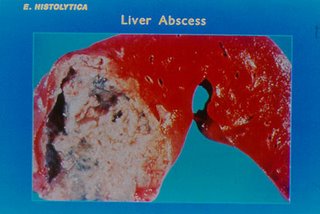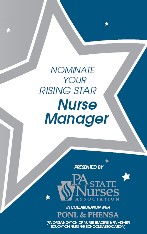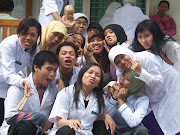LANGKAH-LANGKAH MEMBENTUK KOMITE KEPERAWATAN
April 9th, 2008 | by admin |Asuhan yang berkualitas mempunyai beberapa elemen (ICN) : 1. Meningkatnya kesehatan dalam waktu sesingkat mungkin, 2. Menekankan kepada pencegahan, penemuan dini, dan treatment, 3. Diberikan pada waktu yang tidak tertunda, 4. Dengan landasan pemahaman terjadi kerjasama dan partisipasi klien dalam membuat keputusan tentang proses asuhan, 5. Berdasarkan prinsip-prinsip ilmiah dan cakap dalam penggunaan teknologi dan sumber-sumber keprofesian, 6. Menunjukan kesadaran akan stres dan kecemasan klien (dan keluarga) dengan concern akan kesejahteraan klien secara menyeluruh, 7. Memanfaatkan dengan efisien teknologi yang tepat dan sumber-sumber asuhan kesehatan lain, dan 8. Secara memadai didokumentasikan untuk memungkinkan kontinuitas asuhan dan telaah sejawat.
Asuhan yang berkualitas dapat dicapai dengan adanya profesionalisme keperawatan. Pelayanan keperawatan profesional di RS diberikan oleh kelompok keperawatan. Kelompok keperawatan yang bertanggung jawab untuk terlaksananya peran dan kegiatan perawat di RS dapat berupa komite yang berada dalam struktur tetapi menjalankan peran fungsional. Komite Keperawatan di RS merupakan media utama untuk mengakomodasi dan memfasilitasi tumbuhnya komunitas profesi keperawatan melalui sistem pengampu keilmuan yang dapat mempertahankan profesionalisme pelayanan keperawatan yang diberikan.
A. Pengertian
Komite Keperawatan merupakan wadah non struktural yang berkembang dari struktur organisasi formal rumah sakit bertujuan untuk menghimpun, merumuskan dan mengkomunikasikan pendapat dan ide-ide perawat/bidan sehingga memungkinkan penggunaan gabungan pengetahuan, keterampilan, dan ide dari staf profesional keperawatan.
Komite Keperawatan merupakan oganisasi yang berfungsi sebagai wahana bagi tenaga keperawatan untuk berpartisipasi dalam memberikan masukan tentang hal-hal yang terkait masalah profesi dan teknis keperawatan.
B. Prinsip kegiatan Komite Keperawatan
Prinsip sinergisme yang memberlihatkan thinking power kelompok terpilih untuk bersama-sama berupaya memperoleh keluaran yang lebih efektif.
Tenaga keperawatan profesional diberdayakan untuk berkontribusi secara kolektif terhadap proses pengambilan keputusan yang berhubungan dengan pelayanan keperawatan.
C. Tujuan pembentukan Komite Keperawatan
Mewujudkan profesionalisme dalam pelayanan keperawatan :
1. Mengorganisasi kegiatan pelayanan keperawatan melalui penggabungan pengetahuan, keterampilan dan ide-ide.
2. Menggabungkan sekelompok orang yang menyadari pentingnya sinergi dan kekuatan berpikir agar dapat memperoleh output yang paling efektif.
3. Meningkatkan otonomi tenaga keperawatan dalam pengelolaan pelayanan keperawatan di RS.
D. Peran Komite Keperawatan
1. Fasilitator pertumbuhan dan perkembangan profesi melalui kegiatan yang terkoordinasi.
2. Tim kendali mutu untuk mempertahankan pelayanan kesehatan yang berkualitas dan aman.
3. Problem solver dalam mengatasi masalah keperawatan yang terkait dengan etik dan sikap moral perawat.
4. Investigator, kelompok peneliti yang mengkaji berbagai aspek keperawatan untuk meningkatkan pelayanan.
5. Implementator,vmenjamin diterapkannya standar praktek, asuhan, dan prosedur.
6. Human relation team, menjamin hubungan kerja dengan staff
7. Designer/implementator/pemantau dan evaluator ide baru.
8. Komunikator, edukator, negosiator, dan pemberi rekomendasi terhadap hasil kerja staff.
E. Fungsi Komite Keperawatan
Dalam kaitan dengan pelayanan keperawatan di rumah sakit
1. Menjamin tersedianya norma-norma : standar praktek/asuhan/prosedur keperawatan sesuai lingkup asuhan dan pelayanan serta aspek penting asuhan di seluruh area keperawan
2. Menjaga kualitas asuhan melalui perumusan rencana peningkatan mutu keperawatan tingkat rumah sakit: menetapkan alat-alat pemantauan, besar sampel, nilai batas, metodologi pengumpulan data, tabulasi, serta analisis data.
3. Mengkoordinasi semua kegiatan pemantauan mutu dan evaluasi keperawatan : jenis kegiatan, jadwal pemantauan dan evaluasi, penanggung-jawab pelaksana.
4. Mengintegrasikan proses peningkatan mutu keperawatan dengan rencana rumah sakit untuk menemukan kecenderungan dan pola kinerja yang berdampak pada lebih dari satu departemen atau pelayanan.
5. Mengkomunikasikan informasi hasil telaah mutu keperawatan kepada semua yang terkait, misalnya komite mutu rumah sakit.
6. Mengusulkan solusi kepada manajemen atas masalah yang terkait dengan keprofesionalan tenaga dan asuhan dalam sistem pemberian asuhan, misalnya sistem pelaporan pasien, penugasan staf.
7. Memprakarsai perubahan dalam meningkatkan mutu asuhan keperawatan.
8. Berpartisipasi dalam komite mutu tingkat rumah sakit.
9. Mempertahankan keterkaitan antara teori, riset dan praktek.
Dalam kaitan dengan anggota
1. Menetapkan lingkup praktek, kompetensi dan kewenangan fungsional tenaga keperawatan.
2. Merumuskan norma-norma: harapan dan pedoman perilaku.
3. Menyediakan alat ukur pantau kinerja tenaga keperawatan.
4. memelihara dan meningkatkan kompetensi untuk meningkatkan kinerja anggota.
5. Membina dan menangani hal-hal yang berkaitan dengan etika profesi keperawatan.
6. Mewujudkan komunitas profesi keperawatan.
7. Merumuskan sistem rekruitmen dan retensi staff.
F. Garis besar tugas Komite Keperawatan
1. Menyusun dan menetapkan Standar Asuhan Keperawatan di RS
2. Memantau pelaksanaan asuhan keperawatan
3. Menyusun model Praktek Keperawatan Profesional
4. Memantau dan membina perilaku etik dan profesional tenaga keperawatan
5. Meningkatkan profesionalisme keperawatan melalui peningkatan pengetahuan dan keterampilan seiring kemajuan IPTEK yang terintegrasi dengan perilaku yang baik.
6. Bekerja-sama dengan Direktur/bidang keperawatan dalam merencanakan program untuk mengatur kewenangan profesi tenaga keperawatan dalam melakukan asuhan keperawatan sejalan dengan rencana strategi RS.
7. Memberi rekomendasi dalam rangka pemberian kewenangan profesi bagi tenaga keperawatan yang akan melakukan tindakan asuhan keperawatan.
8. Mengkoordinir kegiatan-kegiatan tenaga keperawatan, menyampaikan laporan kegiatan Komite Keperawatan secara berkala (setahun sekali) kepada seluruh tenaga keperawatan RS.
G. Struktur organisasi Komite Keperawatan
1. Ketua Komite
Tujuan : Memberi kepemimpinan dan arah kepada sub komite
Lingkup tugas :
a. Mereview berbagai isu yang disajikan dan merujuk ke sub komite yang sesuai.
b. Menjaga dan merekomendasi perbaikan-perbaikan yang diperlukan.
c. Memberi bimbingan dan dukungan kepada sub komite.
d. Memfasilitasi proses penetapan tujuan tahunan sub komite
e. Mereview jadwal operasional tahunan
2. Sub Komite Praktek Keperawatan
Tujuan : Menetapkan, mengimplementasikan dan menjaga standar praktek klinik keperawatan tertinggi, konsisten dengan standar profesional yang ditetapkan dan atau yang berkembang dan yang dipersaratkan lembaga pengatur.
Lingkup tugas :
a. Menetapkan lingkup praktek dari perawat profesional dan vokasional : peran dan tanggung jawab staf penunjang asuhan, dan kompetensi umum dan khusus.
b. Menyusun dan memperbaiki uraian tugas dari staf klinik.
c. Berpartisipasi dalam tim kredensial dari para pelaksana praktek yang ditetapkan.
d. Mereview, menyetujui, dan memperbaiki standar asuhan klinik dibidang dimana asuhan keperawatan diberikan.
e. Menyusun format evaluasi dan review sejawat untuk semua perawat klinik.
f. Menggunakan temuan-temuan riset keperawatan kedalam praktek klinik bila cocok.
g. Menyusun dan merevisi sistem dokumentasi keperawatan
3. Sub Komite Pengembangan Profesi
Tujuan : Menetapkan, mengimplementasikan, dan menjaga standar kependidikan yang meningkatkan pertumbuhan keprofesian dan kompetensi klinik tanpa henti.
Lingkup tugas :
b. Menetapkan dan mengevaluasi kebutuhan pendidikan keperawatan dan menetapkan proses-proses untuk memenuhi kebutuhan kependidikan staf bersamaan dengan pengembangan staf.
c. Meningkatkan akontabilitas individual para perawat untuk pendidikanyang diwajibkan dan memfasilitasi proses kredensial/sertifikasi ulang.
d. Menetapkan peran dan tanggung jawab preseptor.
e. Memelihara lingkungan yang kondusif untuk peningkatan dan pemanfaatan riset keperawatan.
f. Berpartisipasi dalam program rekruitmen, pengakuan, dan retensi melalui kolaborasi dengan bagian SDM/HRD.
4. Sub Komite Mutu Keperawatan
Tujuan : Memantau ketepatan dan efektifitas asuhan yang diberikan oleh staf keperawatan sekaligus mengkaji dan memastikan kepatuhan dengan standar dan praktek yang ditetapkan.
Lingkup tugas :
a. Menyusun, merevisi dan menyetujui rencana peningkatan mutu keperawatan.
b. Mengintegrasikan peningkatan mutu keperawatan dengan rencana RS.
c. Memantau dan memastikan kepatuhan terhadap standar yang telah ditetapkan.
d. Memastikan kepatuhan terhadap jadwal pelaporan untuk perbaikan kinerja komite.
e. Mensahkan dan memantau rencana peningkatan mutu unit.
H. Susunan organisasi
1. Komite Keperawatan:
a. Terdiri dari ketua, wakil dan sekretaris dan anggota.
b. Ketua dipilih anggota dari 3 (tiga) calon ketua.
c. Dipilih setiap 3 tahun dan ditetapkan dengan SK direksi.
d. Anggota dipilih dari perwakilan bidang keahlian dan kelompok tenaga keperawatan, misalnya medikal bedah, anak, kritikal dan kelompok Perawat Klinik, peer manager dll.
e. Komite Keperawatan mempunyai sub komite.
I. Hubungan Komite dengan Direktur/Bidang Keperawatan
Komite mempunyai peran yang sanat besar dalam membantu direksi dalam mencapai tujuan yang ditetapkan. Hubungan Komite dengan Direktur/Bidang keperawatan bukan hubungan atasan-bawahan, melainkan hubungan kerjasama, koordinasi, kemitraan, dan saling menguatkan.
Komite Keperawatan dapat menjadi :
1. Media utama untuk mengakomodasi dan memfasilitasi berkembangnya profesional keperawatan yang dapat mempertahankan mutu pelayanan keperawatan yang diberikan.
2. Menjadi mitra direktur/bidang keperawatan dalam mencapai visi dan misi serta tujuan bidang keperawatan.
3. Membantu fungsi-fungsi manajemen dan menyelesaikan persoalan operasional.
4. Memberi penasehatan terkait aspek profesi keperawatan.
J. Persiapan pembentukan Komite Keperawatan
1. Membentuk panitia persiapan
2. Pengarahan bagi panitia persiapan
3. Bedah buku, belajar dari komite RS lain.
4. Menyusun program kerja : tujuan, sasaran, susunan organisasi, tata kerja, jadwal pertemuan, mekanisme laporan, masa kerja komite.
5. Presentasi pada pimpinan daerah/dewan pendiri dan direksi RS.
6. Sosialisasi.
7. Pembentukan dan pengesahan komite.
8. Implementasi kerja komite.
9. Evaluasi.







